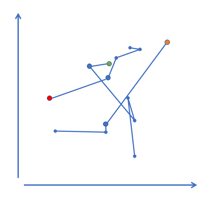Blog Post 2:
Most CPQ Systems Get Quotes Wrong - How to Nail Yours Every Time
"Is your CPQ system more of a hindrance than a help?"
It's a controversial question, but one that needs to be asked. More often than not, quote generation turns into a tedious task, with many CPQ tools missing the mark. This post isn't just to point fingers, but to shed light on the foundational elements that transform a generic quote into a compelling proposition. Let's break down the three building blocks that most systems overlook, and guide you on how to perfect them in your quotes.
Understanding the Customer: More Than Just Data Points
Every CPQ expert will tell you that understanding the customer is the cornerstone of an effective quote. But what does that really mean in the CPQ realm?
-
Industry-Specific Needs: Go beyond the basics. Sure, you know their business type, but what about the industry's emerging trends, challenges, or even regulatory shifts? Configuring your quotes to address these nuances can place you a step ahead of competitors.
-
Operational Challenges: Dive into their day-to-day. If your CPQ system is integrated with CRM tools, this becomes easier. Understand their historical challenges, the solutions they've tried, and their outcomes. Tailor your quote not just to sell, but to solve.
-
Organizational Goals: No two businesses have the same roadmap. Grasp their short-term and long-term goals. A quote that aligns with their vision will resonate more than one that simply offers a product or service.
Pricing Transparency: More Than Just Numbers
Pricing isn't just about offering a competitive rate; it's about trust. In the age of digital business, customers are bombarded with hidden fees, confusing contracts, and misleading discounts.
-
All Cards on the Table: Lay out all costs—initial, operational, and potential. Hidden fees are trust-breakers. Your quote should make the client feel informed, not ambushed.
-
Discount Logic: If you're offering discounts, make the reasoning clear. Is it volume-based? Loyalty-driven? New customer offer? The clearer the logic, the more genuine the discount feels.
-
ROI Justification: High-value products or services can deter potential buyers. But if your quote can demonstrate the ROI, emphasizing the value over cost, you're more likely to secure that commitment.
The Art of Presentation: More Than Just Aesthetics
Sure, a beautifully designed quote is a pleasure to look at, but we're talking about effectiveness here. A well-structured quote is the difference between a glance and a thorough read.
-
Hierarchy of Information: Not all details are equally important. Your quote should present information in a logical flow, emphasizing key points while ensuring secondary details are accessible but not overpowering.
-
Visual Breakdowns: Infographics, charts, and tables aren't just for reports. Use them to simplify complex pricing structures or to visually represent value propositions.
-
Call to Actions (CTAs): What's the next step after reading the quote? A clear CTA, whether it's a meeting request, a callback, or a direct purchase link, can increase conversion rates significantly.
Wrapping up, the truth is, many CPQ systems and processes are designed with a one-size-fits-all mindset. But your customers aren't generic; neither should your quotes be. Understanding them, offering transparent pricing, and presenting information effectively are the trifecta of a winning quote strategy. And while technology aids the process, the real game-changer is the strategy you infuse into it.
Stay tuned for our next post, where we delve into the nitty-gritty details that drive decision-making in quotes. Get ready to revolutionize your CPQ approach!




